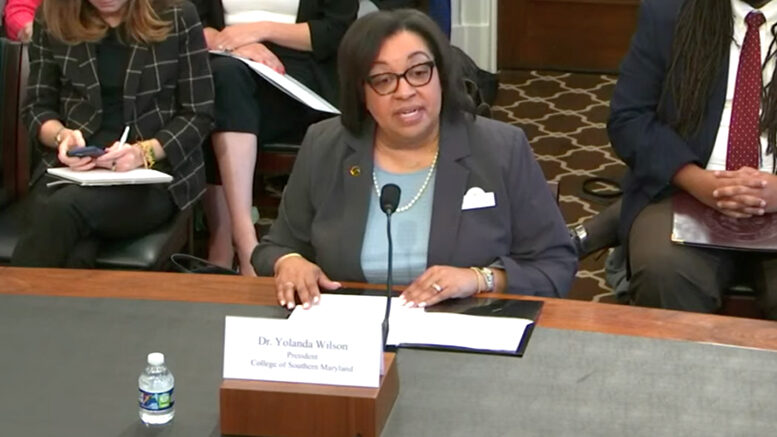Too often, discussions about college affordability focus solely on traditional college-age, full-time students who are pursuing a bachelor’s degree. But that excludes the millions of community college students who are adult learners attending part-time while balancing work and family responsibilities as they seek to attain a credential or licensure that can help them get a promotion or pursue a new job.
And it is those students who can gain the most if Congress permits Pell grants to cover quality, short-term workforce development programs, noted Yolanda Wilson, president of the College of Southern Maryland (CSM), who on Thursday kicked off a Public Witness Day hearing before a House Appropriations subcommittee. Each of the 17 scheduled speakers at the hearing had five minutes to pitch to the panel on topics related to education, labor and human services, on which the subcommittee makes recommendations for federal funding.
Related article: Momentum behind short-term Pell
“The conversation about Workforce Pell is a game-changer for community college students because it removes financial burdens for part-time and skilled trade students who seek our high-quality, short-term workforce development programs,” she told the subcommittee.
In her written testimony, Wilson noted that proposed legislation in both chambers, which includes support from both parties, would lower the threshold for Pell Grant eligibility to 150 clock hours. That would increase access to critical workforce development programs, she said.
A huge population
Nationally, 4.1 million community college students are considered non-credit or workforce development students, Wilson said, citing information from the American Association of Community Colleges. In addition, about 4 million community college students who are in credit-bearing programs attend part-time, she said.
“Many are returning adults, balancing full-time employment, raising and caring for a family, all while taking one or two classes that require studying six to 10 hours a week,” Wilson said. “And they are the under-employed who are working to gain the necessary licensures and credentials to boost their employability and stay current in their chosen profession.”
Short-term Pell also would benefit business and industry, who are desperate for skilled workers. In Maryland, the state’s 16 community colleges provide customized training to more than 1,000 businesses and organizations, serving nearly 100,000 employees, Wilson said.
Wraparound services
Another critical area that can use more federal support is wraparound services, Wilson said. She said in her testimony that students cite food insecurity, transportation and childcare as top obstacles to their education. Some of these issues can be addressed by updating federal programs, such as the Supplemental Nutrition Assistance Program.
Wilson noted that CSM is considering a new position titled basic needs coordinator, who would help students find services at the college or in the community to address those basic needs.

